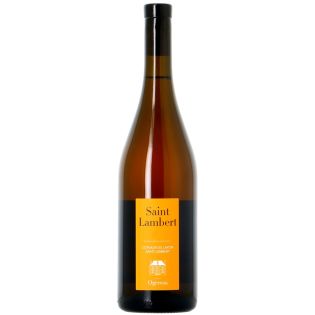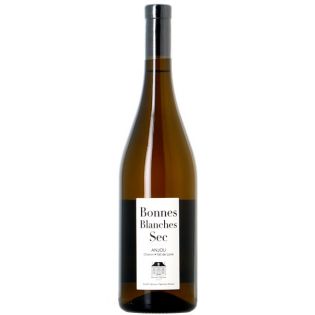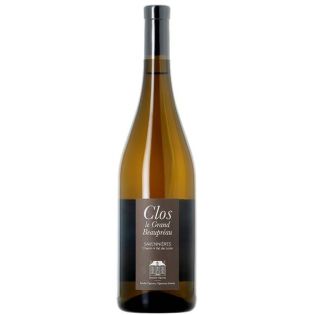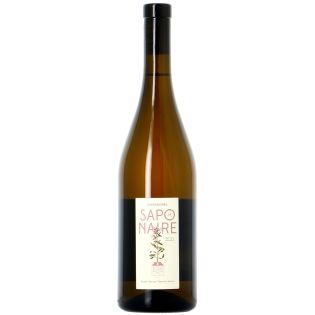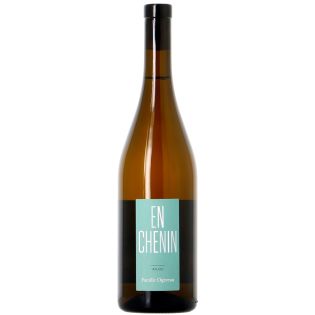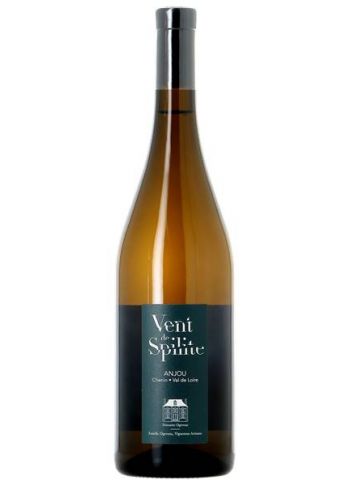
Because of its volcanic terroir, Vent de Spilite is a very luminous wine, carried by a strong invigorating energy. The Chenin grape variety expresses itself in length with an almost "electric" tension. The aromas are fresh with vegetal notes, wet grass, fresh mint, dill and liquorice. The honey is a gentle accompaniment to the pear and apple. The palate is juicy with textural sensations reminiscent of peach skin. It is taut, carried by the minerality of the spilite and marked by the straightness of this volcanic soil which lengthens the finish.
On the right bank of the Layon, a hillside of Spilite, a volcanic rock. A rare southern flora. An oceanic wind. All the contrasts of a great terroir
HISTORY
From our village of Saint Lambert, we can see the volcanic fault on the other side of the Layon, offering a tormented landscape. The desire to explore these hillsides was therefore very strong. We walked these arid and stony hillsides, found a wasteland and eight rows of old vines that we bought from a retired couple of winegrowers. We kept these eight rows of old Chenin, cleared them and replanted them little by little with selections of Chenin from our old vines. These very stony and ventilated hillsides are well named: Pierre Bise. The Stone, this volcanic rock called Spilite. La Bise, the fresh wind that blows almost continuously on these hillsides overlooking the Layon Valley. Vent de Spilite is therefore the translation of the great characteristics of this terroir.
TERROIR
We are here on the right bank of the Layon, at Pierre Bise, in the commune of Beaulieu sur Layon, on exceptional terroirs in more ways than one. To begin with, the rock of volcanic origin, Spilite, is a basalt resulting from the magma of a volcanic fault. This rock gives shallow, very stony soils, with a little clay and above all very rich in iron and magnesium. Then there is the wind, the breeze that blows almost continuously over the upper slopes. On the highest point of the Layon Valley, the very open landscape is magnificent. Looking south, we have a view of our village of Saint Lambert and the Bonnes Blanches terroir. Towards the West, the Layon Valley meanders and in the background, we can see the Quarts de Chaume slopes advancing towards the Layon. Finally, we find on these hillsides a rare and protected flora and fauna of the southern type. We are just above the Regional Nature Reserve of the Coteaux du Pont Barré, a protected biological hotspot managed by the Ligue Protectrice des Oiseaux. Here we have all the contrasts of a unique terroir, a magical place.
THE HAND OF MAN
The challenge on these very shallow and stony soils is to keep the soil cool and moist. This is why we work the soil from spring onwards. The other challenge is to preserve this rare southern fauna, the butterflies in particular, by preserving their habitat. Thus, we keep areas with wild grasses that are not mown. In the vineyard, we use the "Guyot Poussard" pruning method in order to respect the integrity of each vine stock. Pruning is kept short because the vigour of the vine is limited. Chenin is a remarkable but very demanding grape variety. It requires great precision in our manual work of disbudding, lifting, leaf removal and green harvesting. At harvest time, we aim to harvest ripe grapes without botrytis and above all without over-ripeness to preserve the freshness and balance of the terroir. In the cellar, a delicate pressing is carried out on whole bunches followed by a light settling. No or moderate sulphiting is used at harvest time, at a maximum of 1g/hl. This terroir is not very sensitive to oxidation. Fermentation is started at the foot of the vat with the yeasts of the terroir and carried through to the end without residual sugars. Malolactic fermentation is carried out spontaneously, in part or in full, depending on the vintage. The wine is aged for one year on its lees in 400 and 500 litre barrels. The wine is then matured in vats for 6 months.
Our recommendations When and how to serve it?
What a dish with the Vent de Spilite?
Practical information
And to finish More Information
The Estate Ogereau
"Emmanuel Ogereau bichonne ses terroirs d'Anjou, de Savennières et de Coteaux-du-Layon Saint-Lambert, livrant une partition juste du chenin et du cabernet, cultivant sereinement leurs 23 hectares en agriculture biologique.
Cette adresse attachante, hautement représentative du vignoble angevin, connaît une progression remarquable depuis quelques millésimes : c'est bien simple, tout est bon.
On est abasourdi par la définition des vins, leur finesse, leur élégance. La gamme combine avec brio la gourmandise, le plaisir immédiat mais également la garde, avec de beaux élevages en barriques de 400 litres qui donnent du relief aux vins.
Le coteaux-du-layon offre un magnifique équilibre, les blancs secs se distinguent par leur fruit pur et scintillant, les rouges sont aimables et enjoués.
C'est l'adresse à surveiller de très près. 2018 confirme la progression du domaine." 3*/5 Bettane+Desseauve 2022
The Estate Ogereau
It's obvious Our engagements
Fair Price
The right price for the entire selection, all year round... + 2% discount in loyalty points on each purchase!
Cutting edge selection
Designed for the amateur, novice to expert, a cutting-edge offer of the best vintages from the best winegrowers, from all regions of France and beyond.
Careful shipping in 24/48h
Your bottles are shipped within 24/48 hours in a reinforced package, in France and in 25 European countries.
2000 Food and wine pairings
Each wine is accompanied by recommendations of service and food-wine pairing


